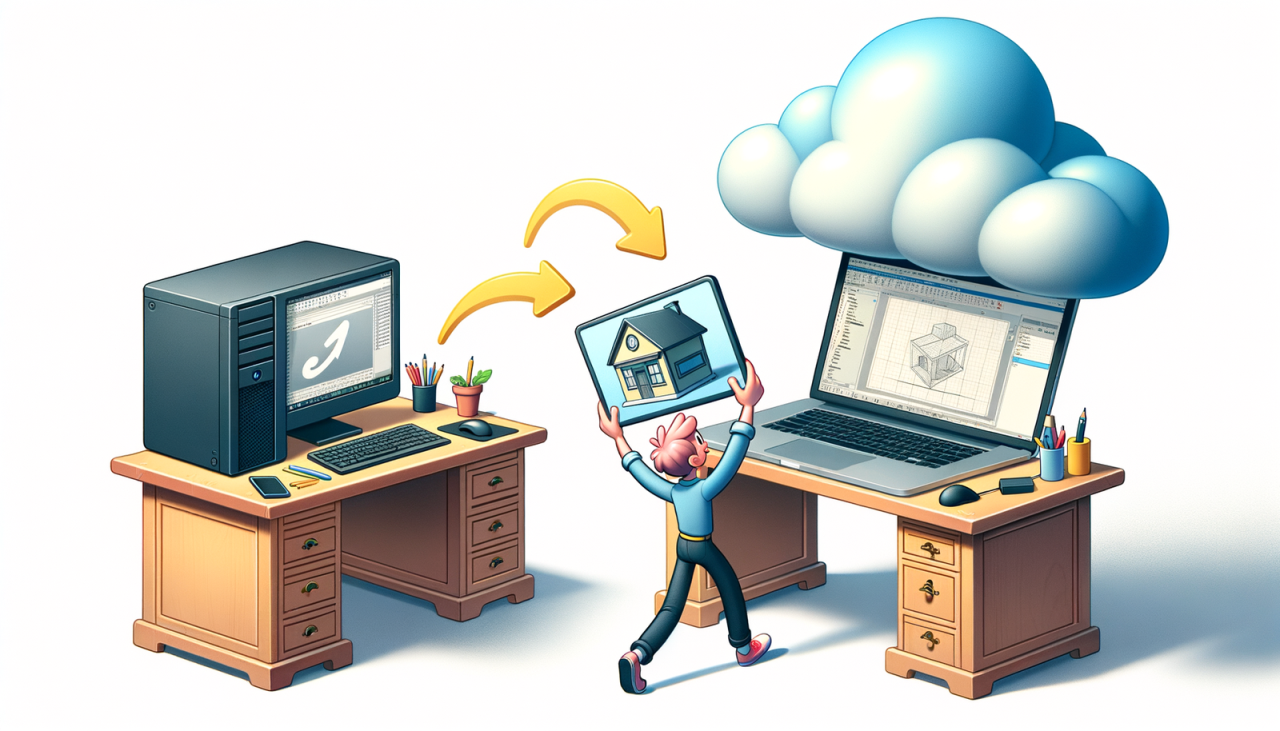The architectural industry is undergoing a massive transformation with the adoption of cloud-based architect software. This innovative technology allows architects, designers, and construction professionals to collaborate in real-time, streamline workflows, and enhance project accuracy. Unlike traditional desktop-based solutions, cloud architecture tools offer scalability, accessibility, and cost-efficiency, making them indispensable in modern design processes.
In this article, we will explore the benefits, key features, and future trends of cloud-based architect software, along with a detailed comparison of the best tools available today.
Why Cloud-Based Architect Software is Gaining Popularity
A. Enhanced Collaboration & Real-Time Updates
One of the biggest advantages of cloud-based architect software is seamless collaboration. Multiple team members can work on the same project simultaneously, with changes reflected in real time. This eliminates version control issues and ensures everyone is on the same page.
B. Accessibility from Anywhere
Since the software is hosted on the cloud, architects can access their projects from any device with an internet connection. This flexibility is crucial for professionals who work remotely or need to present designs on-site.
C. Cost Savings & Scalability
Cloud-based solutions operate on a subscription model, reducing the need for expensive hardware and software licenses. Additionally, businesses can scale their usage based on project demands, paying only for what they need.
D. Automatic Updates & Security
Unlike traditional software that requires manual updates, cloud-based tools update automatically, ensuring users always have the latest features. Moreover, cloud providers implement advanced security measures, including encryption and multi-factor authentication, to protect sensitive project data.
E. Integration with Other Tools
Most cloud architect software integrates seamlessly with BIM (Building Information Modeling), CAD (Computer-Aided Design), and project management tools, creating a unified workflow.
Top Cloud-Based Architect Software in 2024
Here are some of the best cloud-based architect software currently dominating the market:
A. AutoCAD Web & Mobile
-
Features:
-
Real-time collaboration
-
Offline access with sync capabilities
-
AI-powered design suggestions
-
-
Best For: Architects who need a familiar AutoCAD experience with cloud flexibility.
B. SketchUp for Web
-
Features:
-
Browser-based 3D modeling
-
Extensive plugin library
-
VR and AR compatibility
-
-
Best For: Beginners and professionals looking for an intuitive, web-based modeling tool.
C. Revit Cloud Worksharing
-
Features:
-
BIM collaboration in real-time
-
Cloud rendering
-
Version history tracking
-
-
Best For: Large firms requiring BIM integration and team coordination.
D. ArchiCAD Cloud
-
Features:
-
Open BIM workflow
-
Automated documentation
-
Energy efficiency analysis
-
-
Best For: Sustainable design-focused architects.
E. BricsCAD Cloud
-
Features:
-
AI-assisted design
-
Multi-user editing
-
LISP & API support
-
-
Best For: Firms needing advanced customization and automation.
Future Trends in Cloud-Based Architect Software
A. AI & Machine Learning Integration
Artificial Intelligence (AI) is revolutionizing architectural design by automating repetitive tasks, optimizing layouts, and predicting structural issues before they arise.
B. Virtual Reality (VR) & Augmented Reality (AR) Visualization
Cloud-based architect software is increasingly incorporating VR and AR, allowing clients to walk through virtual models before construction begins.
C. Generative Design
This technology uses algorithms to generate multiple design options based on user-defined constraints, helping architects explore innovative solutions faster.
D. Green Building & Sustainability Tools
With rising environmental concerns, cloud-based architect tools now include energy analysis, carbon footprint calculators, and sustainable material databases.
E. Blockchain for Secure Project Management
Blockchain technology is being integrated to enhance transparency in contracts, payments, and project approvals, reducing disputes and fraud.
How to Choose the Right Cloud-Based Architect Software
When selecting a cloud-based architect tool, consider the following:
A. Project Requirements
-
Does the software support BIM, 3D modeling, or 2D drafting?
-
Is it suitable for small-scale or large-scale projects?
B. Collaboration Features
-
Does it allow real-time multi-user editing?
-
Are there commenting and markup tools?
C. Pricing & Scalability
-
Is it a pay-per-use or subscription model?
-
Can you upgrade or downgrade as needed?
D. Integration Capabilities
-
Does it work with other software like Revit, SketchUp, or AutoCAD?
-
Are there API or plugin options?
E. Security & Compliance
-
Does it offer end-to-end encryption?
-
Is it GDPR or ISO-compliant?
Conclusion
Cloud-based architect software is reshaping the future of architecture, offering unmatched flexibility, collaboration, and efficiency. As AI, VR, and sustainability tools continue to evolve, architects must stay updated with the latest trends to remain competitive.
By choosing the right cloud-based solution, firms can reduce costs, improve accuracy, and deliver projects faster than ever before.














